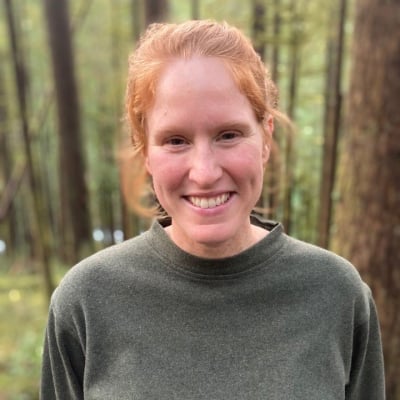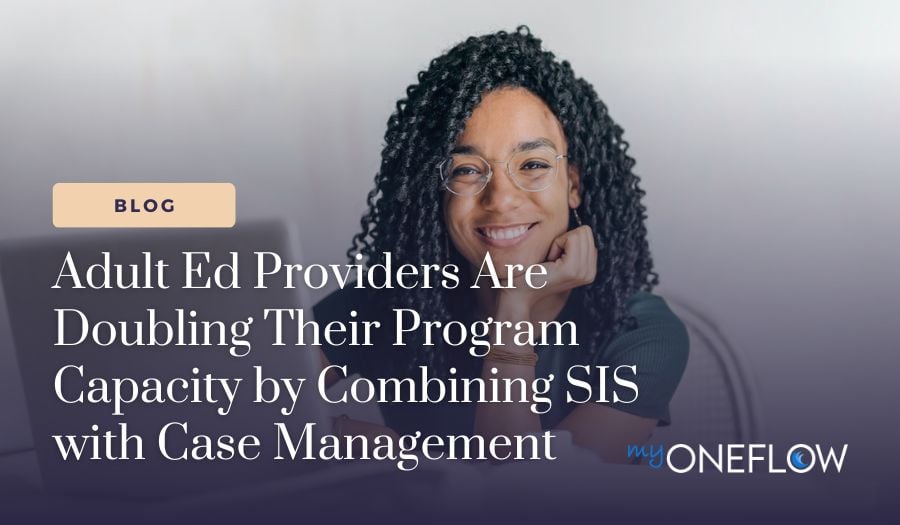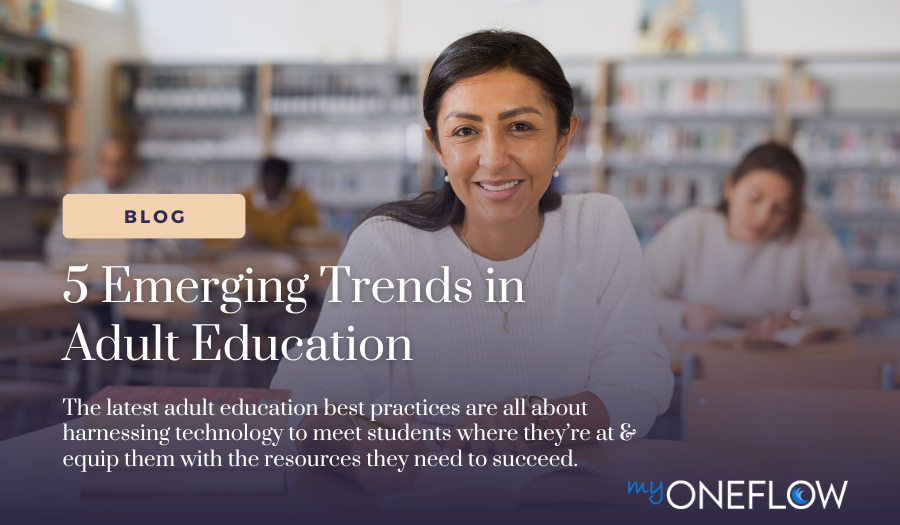The Power of the Nudge: Using Positive Reinforcement to Increase Program Retention
Adult learners often face unique challenges, such as work and family responsibilities, that make it difficult to stay motivated and engaged in their...
4 min read
 Emily Sleister
Aug 1, 2022 8:00:00 AM
Emily Sleister
Aug 1, 2022 8:00:00 AM

Adult learners make up almost 40% of the student population in higher education, and adult education is critical to the overall reskilling and upskilling of the American workforce. While work experience and maturity can be valuable assets to job seekers, a degree from an accredited educational institution is still the gold standard among employers. For socio-economically disadvantaged adults, in particular, the path to degree attainment can be long and complex, often discouraging students from either starting or completing their educational journey.
The COVID-19 pandemic added additional barriers; during the pandemic, 37% of adult learners exited their programs before completion, leading to what the Strada Education Network deemed “a national crisis.”
The post-pandemic labor shortage makes this exodus of adult learners especially troubling. Many adults seek further education for career development, so boosting the workforce talent pool starts with making adult education more accessible and equitable.
Equity is not the same as equality. Prioritizing “equality” in education would look like every student being given the same resources and tools to succeed. However, students – particularly adult students – come from a wide variety of backgrounds and circumstances and need different levels of support on their journey. A one-size-fits-all approach to student support might be “equal,” but it isn't effective.
“Equity” means working to understand each student’s unique situation and connecting them with the specific resources that will empower them to meet their education and career goals. While equitable education is great in theory, it takes a lot of time and labor to manually analyze individual students’ needs and ensure they have access to the appropriate resources.
Luckily, continuing education software can help boost equitable access to student resources while conserving staff labor.
A student’s journey is highly unique. Trying to self-navigate through dozens of forms and information to decipher what might be relevant can quickly derail progress. Instead, organizations can use case management system software like myOneFlow to configure automated workflows that create a personalized virtual experience for students.
myOneFlow’s rules-based workflows are powered by artificial intelligence. They can be customized to help students seamlessly navigate tasks like course selection and enrollment, filling out and submitting required forms, uploading documentation, connecting with an advisor, applying for jobs, and more. Students always know the next right step to take and are provided with the information and resources they need to complete that step.
A personalized experience promotes equity by honoring that each student comes with unique circumstances and goals. myOneFlow helps organizations meet students where they’re at and connect them with the resources they need to achieve these individual goals.
Since the COVID-19 pandemic, online course availability has skyrocketed, with many colleges now offering full degree programs entirely online. Learning from home helped keep students and staff safer during the pandemic, but it still offers several benefits for students that extend beyond public health.
Attending in-person classes can feel like an insurmountable hurdle for students who live in remote areas or don't have easy access to transportation. Virtual degree programs help break down this transportation barrier by providing students remote access to the same high-quality education they would receive in person.
Additionally, many adult students have numerous responsibilities outside of school, such as work and family. In fact, 23% of undergraduate students are parents. Online classes are easier to fit into an already packed schedule, and the time and money saved from avoiding an additional commute can make education more accessible and sustainable for busy families.
myOneFlow's robust SIS software is the perfect companion to online programs by allowing students to virtually manage the logistics of their educational journey. Plus, myOneFlow’s mobile app increases access even more by making it easy for students without a home computer or internet connection to still enroll in classes, track their performance, upload documents, connect with instructors, and more.
Collecting student information for intake, enrollment, and reporting purposes is a critical component of educational services. However, when students are required to fill out multiple forms with the same information, it only creates an additional barrier to enrollment and course completion.
For example, students at Alamo Colleges, a network of community colleges in Texas, were sometimes required to fill out up to 20 forms during the intake process. Switching to myOneFlow enabled them to transition to a single, responsive intake form that auto-populated any additional required documents with the relevant information. Having a single form makes intake simpler and faster for students. Plus, myOneFlow’s automated workflows offer personalized guidance for students based on their form responses, including course suggestions, services, events, and more.
For staff, the manual data entry that inevitably accompanies paper forms is time-consuming and increases the risk of security breaches or user error. By using a single program for all data collection and reporting, staff are freed up to use their time to more deeply connect with students. Plus, it’s easy to pull reports and analyze where students need additional support so programs can drill down and identify specific areas of improvement.
myOneFlow’s powerful workflows and fully configurable platform support institutions in their efforts to increase equity and access to education. In addition to education, myOneFlow also serves clients in workforce development, grant managing programs, departments of health, and more. Read the Frequently Asked Questions to learn more about myOneFlow’s capabilities, and contact our team to discuss how myOneFlow can help your organization better serve your clients.

Adult learners often face unique challenges, such as work and family responsibilities, that make it difficult to stay motivated and engaged in their...

When we talk to adult education providers, we hear the same story time and time again. They use different systems – or worse, spreadsheets – to...

In today’s rapidly changing world, adult educators must be on the cutting edge of education trends to give their students the highest chance for...